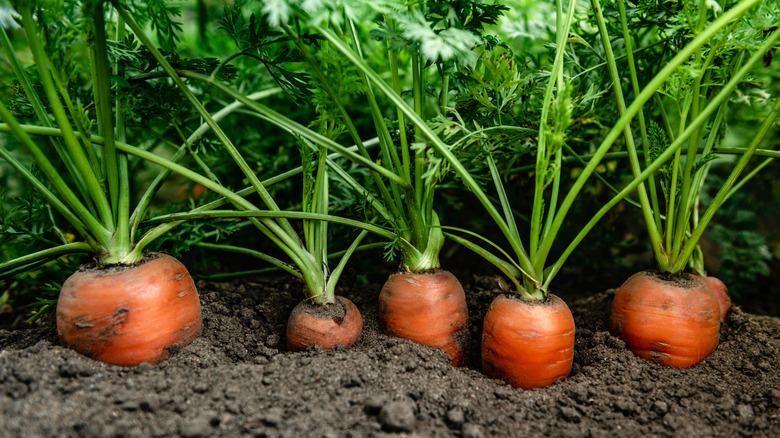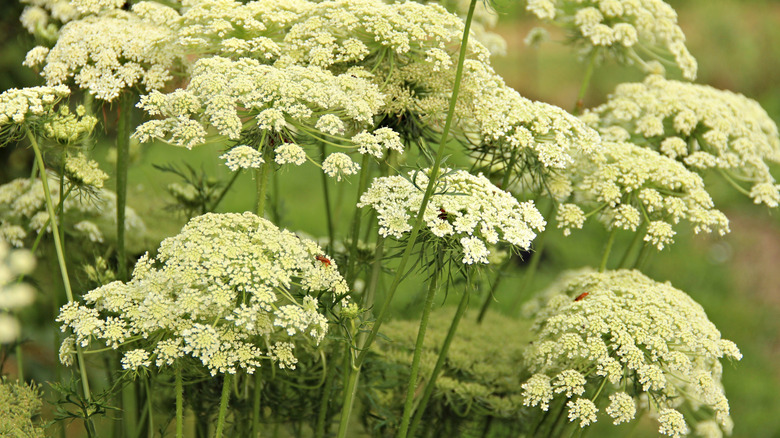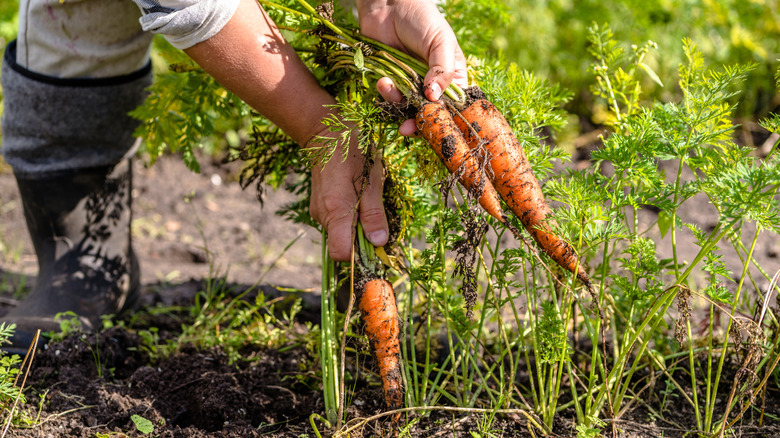Why You Should Replant Your Carrots (It's Not What You Think)
Seed saving is smart. This practice dates back to the advent of agriculture; let your crops flower, go to seed, and save the seeds so that you have the means to replant next season. As long as people have been growing their own food, they've set aside a reserve to plant the following year. Our House Digest gardening experts have determined that while you can't regrow carrots' taproots from just the tops, you can coax them to flower and form seeds to save. This is a great way to get more life, literally, out of your food scraps. However, some home gardeners tout replanting a full carrot for regrowth. We got to the bottom of this idea to see if it's worth a try.
After an exclusive chat with House Digest's favorite in-house Master Gardener and Garden Editor, Tiffany Selvey, she shared that this method comes with multiple potential benefits — namely in the form of more robust seeds, and the fact that this is a system that can result in zero waste. If you're a carrot lover who's starting your seed-saving journey, replant a few mature carrots at the end of the season. Better yet, just leave a few carrots in the ground after your harvest.
How to reap what you sow
Carrots are biennial, meaning that they produce seed their second summer after planting. They work hard to form the delicious taproot in year one. If given the chance, overwintered carrots will flower in their second season. The fading flowers will leave behind seeds for next spring. Replanting full carrots is similar to — but better than — replanting just carrot tops for a seed harvest.
In an exclusive interview with House Digest, plant expert Tiffany Selvey stated that with this seed-producing method, "the plant has the entire taproot from which to absorb nutrients. Those nutrients will go to the blooms and ultimately the seeds, potentially leading to a higher quality seed." Selvey fully recommends trying this technique so that food never goes to waste. She states that it's a smart way to use up extra produce that you can't eat or for carrots that are a bit too old for eating. On the contrary, if you pull a carrot that's particularly impressive, replanting it for seed is a chance to pass on its good genes.
A few cautions
When asked whether there were any concerns about replanting carrots for seed, Selvey had only a few suggestions to help ensure success. "If the carrot is too mature, the replant might not be successful in producing blooms and seeds, but that's a minor issue." Additionally, if you're replanting carrots rather than leaving them in the ground in the fall, Selvey recommends leaving about ¼ inch of the carrot above the soil's surface. If the top is covered, it can cause the carrot to rot rather than sprouting a new top.
Another important consideration to take when replanting carrots for seed is what kind of seeds they are. They need to be open-pollinated seeds, not hybrids, since seeds created by hybrid plants won't reliably produce the plants of the same quality as the first generation. She reminded us that many heirloom seeds are also open-pollinated.


